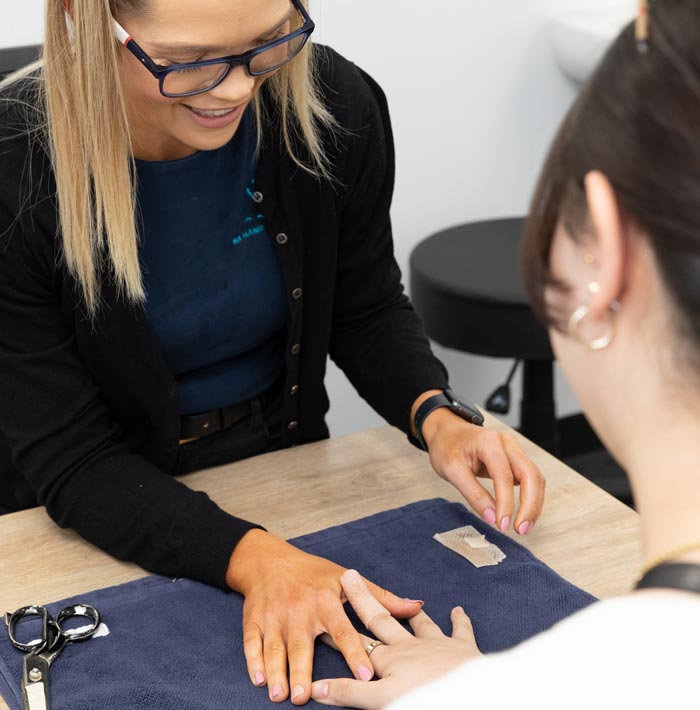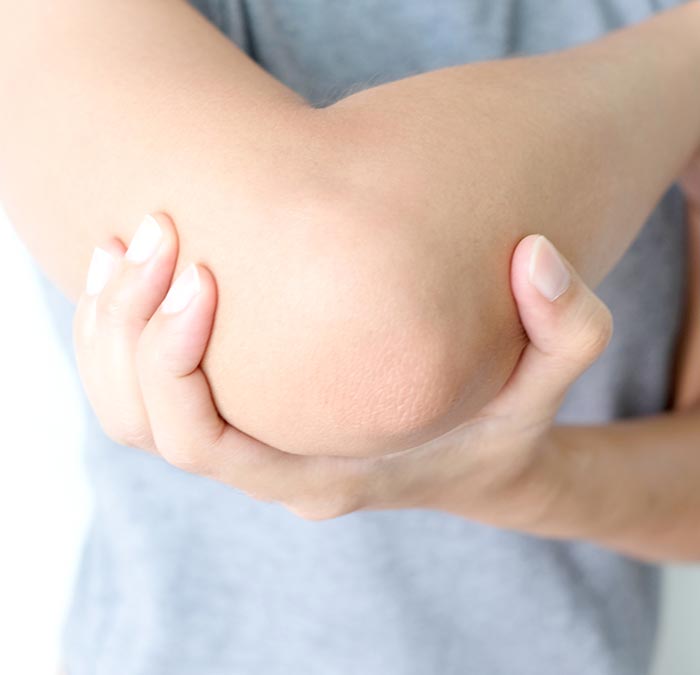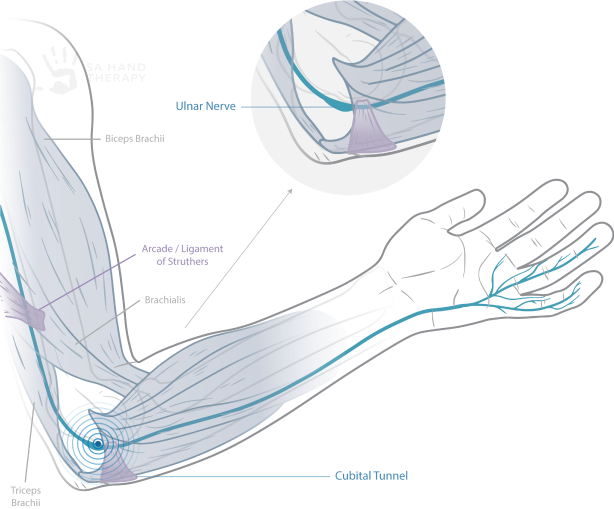A face-to-face consultation will allow for thorough investigation.
For Clarity and a Professional Assessment,
Book a Time to See Us

Common Conditions

Cubital tunnel syndrome involves compression of the ulnar nerve. The ulnar nerve travels down the arm to the forearm via the cubital tunnel located on the inside (medial) aspect of the elbow.
The cubital tunnel is a common site for the ulnar nerve to be compressed or irritated, causing altered sensation or pins and needles to the hand over the ring and little fingers. In some cases, weakness may also be found in the muscles of the hand supplied by the ulnar nerve.
The ulnar nerve is compressed at the cubital tunnel when abnormal stress is placed on the elbow. This could be through a direct injury, prolonged pressure – such as leaning on the elbows – or via swelling within the elbow joint from conditions such as arthritis.
Cubital tunnel syndrome can also be caused by poor elbow posture during repetitive elbow movements, resulting in nerve friction and subsequent irritation.

A hand therapist will assess your neural symptoms and provide advice regarding appropriate management options. A hand therapist can assist with strategies to reduce pressure placed over the nerve at the elbow, such as appropriate splinting solutions for night and assistance with activity modification. We hold additional skills in manipulation techniques, taping, strengthening and exercises to assist neural movement and reduce neural irritation at the elbow.
Reference:
Shah, C. M., Calfee, R. P., Gelberman, R. H., & Goldfarb, C. A. (2013). Outcomes of rigid night splinting and activity modification in the treatment of cubital tunnel syndrome. The Journal of Hand Surgery, 38(6), 1125-1130. Doi: 10.1016/j.jhsa.2013.02.039
While these are general examples, our hand therapists will help match solutions best suited to your condition and specific needs.
